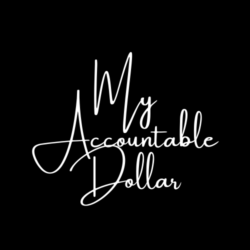
A budget is a plan to allocate your income to your expenses in order to achieve your financial goals. It’s about having control of your money, not letting it have control of you.
A budget may be used for different periods of time: weekly/bi-weekly/monthly, etc. It is recommended to use the frequency which aligns with your primary source of income. This will be your budget cycle.
The following steps can help you create a realistic budget:
TRACK YOUR EXPENSES
I don’t believe in depriving myself of things I enjoy doing with money, but I do like to optimize what my money can do. To create that balance I believe tracking expenses is the first step in creating a budget. I believe that by not only knowing what you have to spend on (obligatory/fixed expenses), knowing your spending behaviour helps you to successfully create a budget that you can maintain.
There are a variety of budget systems and recommendations for how to allocate your income, but I see how that could be considered restrictive if you don’t value things the same way. For example, a budget model that recommends specific percentages for needs vs. wants. It is often that the needs category exceeds the wants but I have actually had the opportunity to have my needs be less than 35% of my salaried income. If I was following such a model it could have suggested that there was room to “upgrade” my lifestyle – a bigger living space and/or a newer/luxurious vehicle if I wanted. However, I like to travel, so I made that a priority instead.
Now while I know that may not be the case for the average person, I’m only highlighting that it could result in overspending in one category and not truly doing the things you want to do. So if you don’t already know what you value spending on, think about it and start tracking your expenses. It doesn’t have to be a complex process. I use a simple Excel spreadsheet and there are a lot of free expense tracking apps you can use.
IDENTIFY YOUR GOALS
What is the outcome you want to achieve by having a budget?
- Do you want to stop the cycle of not having enough or having just enough until the next payday?
- Do you want to plan for a special event (birthday, anniversary, vacation)?
- Do you want to buy a vehicle or a home?
- Do you want to repay debt?
- Do you want to save for retirement?
Whatever your goals are, ensure they are S.M.A.R.T. (Specific, Measurable, Achievable, Realistic and Timely). Your goals should always include implementing or maintaining an Emergency Fund. All goals should be considered whether short term (For example, Christmas celebrations) or long term (For example, buying a home in two years). This will allow you to know how much you need to put aside each budget cycle. The frequency is dependent on how often you get paid and when your obligatory expenses become due.
For example, when I wanted to save the down-payment for my first apartment I decided how much I wanted to save and the timeline for doing so. I was being paid monthly and my expenses were fairly constant each month so I just divided the full amount by the number of months to my goal to determine how much I needed to save monthly. Once you’ve decided on your cycle target, automate the process.
ASSESS YOUR INCOME
Combine all your income. Consider how much you have coming in from your job (net/take-home pay) and any other source of income you have no matter how small. If your income fluctuates, use your lowest income for the past year as a guide.
If you currently only have one source of income I encourage you to find additional ways to earn.
CREATE YOUR PLAN
Now that you’ve identified your expenses and income, first allocate the portion of your income required to cover your needs. These are the items you cannot live without (rent/mortgage, car payment and/or gas, basic utilities – light and water, food, basic clothing). Secondly, allocate the portion(s) of your income for your goals. If there is still more income, allocate to your wants starting from highest to lowest priority. If you have no income remaining or if you weren’t able to cover your needs and your goals, check where there might be room to reduce your expenses first then focus on increasing your income. If you still have income remaining, that’s awesome! Congratulations you are on a great path! Put those excess funds towards your emergency fund or one of your long-term goals.
REVIEW & REPEAT
Tracking your expenses should be a continuous process. Adjust your budget as needed. If you have reached the limit for a particular expense category, you may have to reallocate from another category or forego spending on that category until your next budget cycle. It is not recommended to fund shortfalls by taking on debt, no matter how small it may seem. At the end of your budget cycle, identify any differences between the amounts budgeted and the actual amount spent on each category. This will assist you in creating your next budget.
Budgeting does not have to be an overwhelming or tedious task but it is important if you want to see changes in your finances. The goal is always to keep all expenses equal to or lower than income in order to achieve financial freedom and build generational wealth.

2 Replies to “How To Create A Budget”